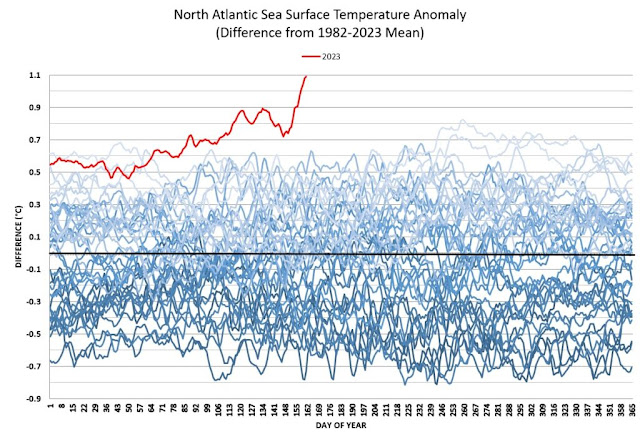‘A Job That No One Sees’
The Unsung Heroes of Child Care: Family, Friend, and Neighbor (FFN) Caregivers
In 2000, Sara Martinez — who immigrated from El Salvador to Los Angeles and was then a stay-at-home mother of three — was asked for a favor. Her neighbor, a home-based child care provider, needed support caring for the seven children she served because her husband had suddenly fallen ill. Martinez, 29 years old at the time, agreed to help. She initially volunteered for an hour each week, then two, then three. She assisted for a few days a week until she moved to another neighborhood in 2005.
Martinez never asked to be compensated. In her eyes, after all, it was just a favor. Yet, this “favor” spurred two decades of child care that Martinez provided for families in her community in South Central Los Angeles.
Martinez is one of the estimated millions of child care providers known as family, friend and neighbor (FFN) caregivers, which represents the most common type of non-parental child care in the United States. In these popular arrangements — which can range from a few hours a day to full-time — a relative, friend or neighbor provides informal child care in the home of the child or the caregiver.
While FFNs are the largest group of caregivers in the country, it is a job that many in the field refer to as “invisible” in the already historically overlooked child care workforce. That’s reflected by the minimal resources allocated to FFNs throughout the country.
Amplifying the Voices of Family, Friend, and Neighbor (FFN) Child Care Providers: Uncovering Stories of Resilience and Advocacy
There are so many stories like Martinez’s. In fact, when my own mother immigrated to Los Angeles from Mexico at 17 years old, one of her first jobs was in child care. As a child, I often heard her share tales from her time caring for children. I was born and raised in South Central Los Angeles, in a predominantly Black and Latino neighborhood with many low-income families. These informal child care arrangements surrounded me.
The stories of family, friend and neighbor providers — women like Martinez and my mother — need to be heard. They have the power to shift public narrative and to inspire action.
Deeply interested in the experiences of FFN child care providers and the accessibility of resources for their work, I developed a research project as part of my undergraduate studies at Harvard University. I interviewed five women — all Central American immigrants based in California — to understand their work with children and families and their access to resources. I conducted the interviews in Spanish, and with support from Early Edge California, I paid each participant a stipend for their time.
Unveiling the Strength and Struggles of Family, Friend, and Neighbor (FFN) Child Care Providers: Nurturing Communities Amidst Inequality
My mother’s community ties helped connect me to three of the five women I interviewed, and I’m honored to be able to share their vibrant stories, which show how FFN care is critical for the child care ecosystem, the general workforce and the children and families they serve.
While each provider’s journey is unique, there are some shared facets of the FFN experience. All of the women I interviewed, for example, were motivated to provide child care by a commitment toward their own families and the children in their communities. These women have all struggled with poor compensation, and they all recognize that the parents they serve cannot afford to pay them more. They were also astutely aware that their work is not only financially, but socially, devalued.
The stories of these providers — women like Martinez and my mother — need to be heard. They have the power to shift public narrative and to inspire action.
The profiles below present the experiences of three of the FFN providers as they shared them with me in their interviews. They’ve been translated to English, lightly edited and condensed for clarity, and assembled with anecdotal information based on my field notes.
Teresa Mendez

Connections are everything in the world of FFN care. My mother connected me to Teresa Mendez, whom she met when their youngest daughters attended the local elementary school. Mendez immigrated to Los Angeles from El Salvador at 25 years old, a single mother with three children. She worked various jobs in the service industry until 2013, when Mendez suffered a work-related injury that left her with a physical disability. She focused on her recovery for two years. When she wished to return to the workforce, she struggled to find a job — but as a single mother, being unemployed wasn’t an option.
In 2019, Mendez met a mother at her youngest daughter’s school who needed full-time child care for her 3-year-old daughter and after-school care for her 6-year-old daughter. “I like caring for children. And I needed money,” Mendez recalled. She was offered $100 per week. “The mother earned very little, so she paid me very little. But I settled … because, in the past, I have needed to pay a babysitter. I know how hard it can be to afford it.” Mendez earned about $2.63 per hour to care for the two girls.
Every weekday at 8 a.m., Mendez met the mother at the school their daughters attended and took the toddler home with her. After feeding her breakfast, she gave her toys from her own children’s stash to play with and took her to the local park. After lunch, Mendez strapped the child in a stroller to pick up her sister (and Mendez’s own daughter). With three girls to feed and bathe, Mendez was kept occupied until the girls’ mother arrived in the evening to take them home.
The work was manageable but, to Mendez’s dismay, it was put on hold because of the pandemic. The mother wasn’t comfortable with the health risk.
Mendez eventually found work at a furniture workshop, where she works today. With a stable job, she thought it was the end of her days caring for children.
Last spring, two of Mendez’s children — now adults and parents themselves — asked her for a favor. Her daughter needed someone to sporadically look after her children, 1 and 3 years old. Meanwhile, her son needed care for his infant and toddler from 9:30 a.m. to 3:30 p.m. during the four days a week he worked. Despite having a full-time job at the workshop, Mendez agreed to care for her grandchildren. While her daughter doesn’t regularly compensate her, since the arrangement is considered an occasional favor, Mendez’s son pays her $300 biweekly, which comes to about $6.25 per hour. He also provides Mendez with groceries, such as eggs, milk and yogurt, to help cover his children’s meals.
During our interview, Mendez invited me to spend a morning with her. I visited on a day when she was scheduled to work at the furniture shop. Mendez opened the workshop at 9 a.m., cleaning the space and setting up makeshift beds for napping later in the day. Thirty minutes later, Mendez’s son arrived carrying a portable car seat with a wide-eyed baby, while an energetic toddler bustled into the space. Reassured by her son that the baby’s diaper was freshly changed, Mendez reached out to take the infant.
I asked Mendez how she managed to work the furniture store and take care of her grandchildren. “During the day, I am usually just taking calls or waiting for clients. If I have things to do at the desk, I do them before or after the children leave,” Mendez explained. “And I’m in luck. These two are like their father, very calm.”
Plus, she added, “For me, it is not difficult because I have previous experience with child care.”
Experience helps, but so do resources. When asked what additional support could help providers, her answer was candid.
“Funds. Aid. What I am most lacking is money,” she said.
She was unaware of licensing programs and courses, but she said that training would also be helpful.
“People take care of children, but there’s no recognition of their work. It is a job that no one sees.” -Teresa Mendez
Above all, Mendez wished that child care was recognized for the labor it is.
“People take care of children, but there’s no recognition of their work. It is a job that no one sees,” she said.
Nataly Romero
Nataly Romero is an FFN whose tie to my mother is close to home — they’re neighbors. Whenever I am home, I see Romero running in and out of her apartment with a tiny toddler in her arms, her great niece whom she cares for.
At 6 years old, Romero immigrated to Los Angeles from Mexico with her parents and siblings. Raised in the city, she graduated high school and had her first child soon after. She had a brief stint in retail work, but she primarily dedicated herself to raising her children while her husband worked.
In 2010, her older sister was looking for after-school care for her son and daughter, and Romero offered to look after them until her sister found a permanent solution. Four days a week, she took care of her niece and nephew in the afternoons, along with her own three children, until her sister picked them up around 7:30 p.m.
At first, Romero did this as a favor. But the costs of food and activities added up. After three months, Romero decided to charge her sister, who offered her $200 biweekly, which came out to about $3.13 per hour. Romero knew that her compensation was not what it should be. “I did it for the kids, not really because she paid me,” she reflected. After four years, Romero decided the compensation was insufficient and stopped caring for her sister’s children. Then she vowed that she’d never provide child care again. “It was way too much responsibility. It is too much work and very poorly paid,” she said.
Romero went on to work for an elderly care agency for about a decade. But in early 2022, after leaving the agency, her nephew — now an adult — called her, frantic. His partner, who works at the local community clinic, had contracted COVID-19, and they were worried about his 2-year-old daughter becoming infected.
While her niece recovered, Romero took care of her great-niece, Melanie. This one-time favor soon turned into a full-time job. The couple saw how comfortable Melanie was with Romero, and asked her to care for Melanie regularly. They offered her $300 biweekly to take care of Melanie from 7:30 a.m. to 4:30 p.m. on weekdays — a similar wage to what her sister once paid her, yet Romero accepted. After all, this was family.
Romero still cares for Melanie, now 4 years old, after school. She recently took on a night shift as a janitor in a local gym to supplement her income. Like Mendez, Romero must work an additional job on top of child care to make ends meet. But she’s motivated to provide trusted, safe child care for her family.
Sara Martinez

Sara Martinez, the child care provider introduced at the beginning of this story, found herself picking up right where she left off when she moved to a new neighborhood in 2005. She was approached by a new neighbor — a young single mother who needed full-time care for her 6-month-old infant and 4-year-old toddler. At that point, Martinez had four of her own children — an infant and a 4-, 7- and 14-year-old.
This time, Martinez was paid $100 a week, which, depending on the length of the day, came to about $2 an hour for both children. When the mother could no longer afford to pay, Martinez continued caring for the children.
Mornings were busy for Martinez, navigating multiple school drop-offs and managing the two babies. However, the most difficult part of Martinez’s days, she recalled, were the early afternoons, when she took the babies to the local preschool to pick up her daughter and the eldest child she cared for.
“I had two strollers that I tied together, creating a makeshift double stroller,” Martinez shared with a small laugh. “And I had their siblings holding onto either side of the stroller on the walk home.” Martinez returned home for a short time before preparing to venture out again, this time to pick up her 7-year-old.
A few years later, Martinez moved again to another local neighborhood, where she continued her work. She soon met a local pregnant mother who wanted to hire her to care for her son when he was born. “I was so excited. I felt as if I [would be] raising another baby,” Martinez recalled.
For six years, Martinez cared for the child, named Roger, from 7:30 a.m. until 3 p.m. every weekday. At $100 per week, Martinez was earning approximately $2.66 per hour. When Roger’s sister was born, Martinez cared for her as well and the children’s mother increased Martinez’s compensation to $250 per week, or about $5.88 per hour.
In December 2019, Martinez took on a short-term job caring for a neighbor’s two elementary-aged children over winter break while school was closed. In March 2020, with schools across the country shifting to online learning due to the pandemic, that neighbor was again left without child care for her two daughters, so Martinez took them in. At the height of the pandemic, she had seven children in her apartment daily: her own three children, Roger and his sister, and her neighbor’s two daughters.
“I had my son in my room, and my daughter on the balcony. Roger sat by the door in a small space by the stairs. The eldest of the other girls was in my daughter’s room, and the younger two were with me in the living room,” Martinez explains. “I would walk around, checking to make sure they were all logged onto class. For lunch, I would have the children I cared for eat first at the table. Then my children and I would eat.”
This pandemic period felt harder and more expensive for Martinez. She and the children wore masks. She cleaned surfaces as often as possible, keeping the windows open for ventilation. She played teacher as best she could when the school-aged children had asynchronous assignments. Her limited English proficiency presented challenges, but she relied on her own older children to help the younger ones she cared for.
Martinez continued caring for these children through the summer and the beginning of the following school year, when they were still learning remotely.
“It was difficult,” she said, “but I needed the money.”
In October 2020, after about two decades as a child care provider, Martinez made a difficult decision. She alerted the mothers of both pairs of siblings that she could no longer provide them with child care. She had recently divorced her husband, and the compensation she received from child care was not enough to sustain basic needs for herself and her own children. She has since transitioned to a service industry job that, at slightly above California’s minimum wage of $15.50, is approximately three times what she earned at the peak of her time as a child care worker.
Those who care for children do not earn much because parents who earn $15 an hour cannot afford to give much.
—Sara Martinez
“I never blamed the mothers,” Martinez emphasized when discussing her decision to stop providing care. “Those who care for children do not earn much because parents who earn $15 an hour cannot afford to give much.”
Martinez loved caring for children and during our interview, she had tears in her eyes as she reminisced about the pain she felt leaving two families scrambling when she had to take on a new job.
But love wasn’t enough. The low wages were no longer sustainable.
Family, Friend and Neighbor Providers Deserve Better
To support FFNs, advocates, policymakers and researchers must consider the challenges they face. Like the women interviewed for this project, FFNs are predominantly women and half are people of color. They are disproportionately likely to be immigrants and have limited English speaking proficiency. Systems of inequality can compound to amplify the barriers experienced by FFNs in their work and daily lives.
Economic precarity was evident for the women I interviewed. Each earned only a few dollars an hour for their work, low wages that illustrate the blatant economic injustice they’ve experienced. Natalie Renew, executive director of Home Grown, a national initiative that works with home-based child care providers around the country, unpacked the financial and social devaluing of FFN providers because of their background in a recent interview with me.
“FFNs serve their communities, which are often low-income. Families can’t afford to pay them. Meanwhile, the child care system does not trust Black and Latinx families to select appropriate caregivers, and then they don’t trust the caregivers themselves. The system does not value nor resource these communities, and the lack of a consistent, institutional pathway to get resources to FFNs in ways that are meaningful to them creates a need for triage.”
The experiences of FFNs diverge based on whether they’ve received the “triage” Renew mentions. A lack of long-term mechanisms that provide reliable resources to FFNs creates a need for local organizations to support communities.
The majority of FFNs, including Mendez, Romero and Martinez, do not have access to resources such as funding, training or materials to support them in their work. In fact, these three women had never heard the term Family, Friend and Neighbor child care provider.
However, two of the women I interviewed were connected with trusted local networks and received resources that helped them perform their role to the best of their ability. For more about how connecting FFNs with resources can make a difference, read part two of this story.

Offered by our Wellcare World friend at
Trending Also -> Physiotherapy Terahertz Technology TeraMD
Wellcare World specializes in providing the latest advancements in wellness technology, supplementation, and lifestyle changes that improve health and increase the quality of people's lives. To learn more, visit WellcareWorld.com and begin living a better life today.
Share Us With Others


















